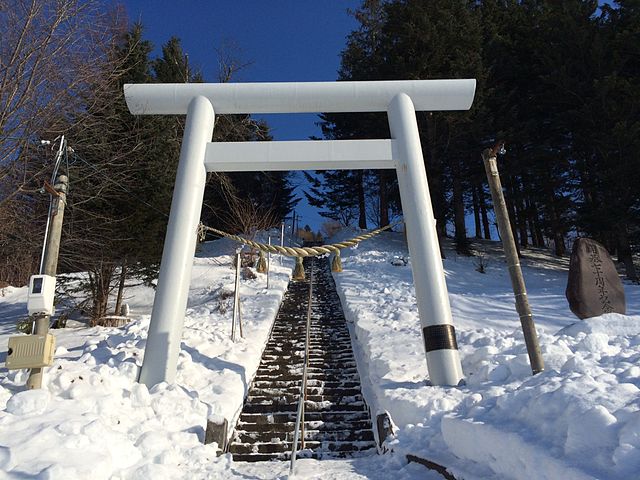Tengu ( TENG-goo, Japanese pronunciation: [teŋgɯ]) are a type of legendary creature found in Shinto belief. They are considered a type of yōkai or Shinto kami. The Tengu were originally thought to take the forms of birds of prey and a monkey deity, and they were traditionally depicted with human, monkey, and avian characteristics. Sarutahiko Ōkami is considered to be the original model of Konoha-Tengu, which today is widely considered the Tengu's defining characteristic in the popular imagination. He is the Shinto monkey deity who is said to shed light on Heaven and Earth. Some experts theorize that Sarutahiko was a sun god worshiped in the Ise region prior to the popularization of Amaterasu.
Kobayakawa Takakage debating with the tengu of Mount Hiko, by Yoshitoshi. The tengu's nose protrudes just enough to differentiate him from an ordinary yamabushi.
Tengu as a kite-like monster, from Toriyama Sekien's Gazu Hyakki Yakō. Text: 天狗/てんぐ (tengu)
Iga no Tsubone confronts the tormented spirit of Sasaki no Kiyotaka, by Yoshitoshi. Sasaki's ghost appears with the wings and claws of a tengu.
Crow Tengu, late Edo period (28×25×58 cm)
Shinto is a religion originating from Japan. Classified as an East Asian religion by scholars of religion, its practitioners often regard it as Japan's indigenous religion and as a nature religion. Scholars sometimes call its practitioners Shintoists, although adherents rarely use that term themselves. There is no central authority in control of Shinto, with much diversity of belief and practice evident among practitioners.
The torii gateway to the Itsukushima Shrine in Hiroshima Prefecture, Japan, one of the most famous examples in the country. Torii mark the entrance to Shinto shrines and are recognizable symbols of the religion.
A torii gateway to the Yobito Shrine (Yobito-jinja) in Abashiri City, Hokkaido
A torii gate at the Takachiho-gawara shrine near Kirishima, Kagoshima Prefecture, which is associated with the mythological tale of Ninigi-no-Mikoto's descent to earth.
An artistic depiction by Utagawa Kuniyoshi of the kami Inari appearing to a man








